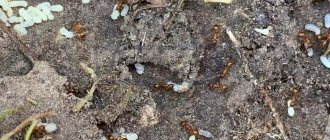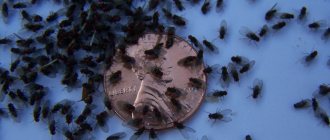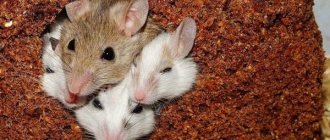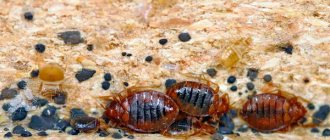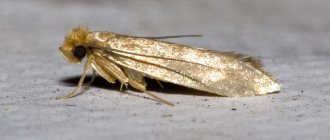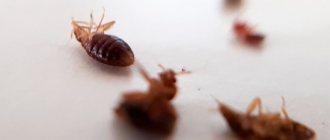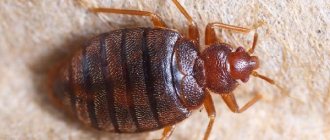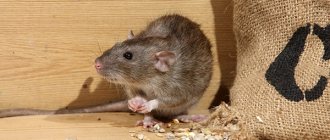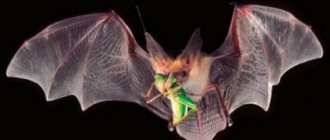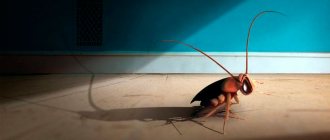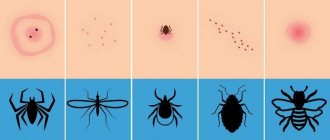We've thought of everything: the perfect couple of days in Almaty
Read November 26, 2021
I'm in Almaty, and you?
Read November 18, 2021
More please: how to save money when traveling
Read November 16, 2021
Russia resumes flights with five countries it almost never flew to before
Read November 11, 2021
The authorities want to introduce QR codes for traveling around Russia. How will it work?
Read November 8, 2021
How to have fun in Goa
Read
Paper wasps. You've probably seen their hives, which look like they were made of tissue paper, at your grandmother's in the village or on your balcony. Let's talk about how to deal with them.
What is the danger
Essentially, a wasp sting is an injection using a sharp sting. By thrusting it into the skin, the insect injects a specific poison, to which 2% of the total population of the planet is hypersensitive. Therefore, if for most people a bite is just a painful lesion on the skin, then for some it is very dangerous and can even cause anaphylactic shock.
Wasp venom, containing histamine, acetylcholine, neurotoxin, etc., can cause a rather unpredictable reaction in the human body.
Therefore, knowledge of what to do after a wasp sting is very important. They will help avoid swelling, rashes and other symptoms.
If a person does not have hypersensitivity to wasp venom, one bite will not harm his health. However, this striped insect has a sufficient supply of poison, which is quite enough for several attacks.
Don't forget that wasps live in colonies. A nest disturbed by humans can cause attacks by many individuals. And numerous bites can cause intoxication. People suffering from allergies, diabetes or asthma should be especially wary. Also at risk are children, the elderly and pregnant women - their bodies find it difficult to cope with toxins.
Bacteria that are present on the body and paws of wasps can end up in the human body after a bite. Having become accustomed to a different environment, they multiply, which can result in the development of purulent abscesses. In this case, it is best to seek help from a medical facility to eliminate the risk of developing an inflammatory process.
Why you can't crush wasps
Wasps and bees attack humans only in self-defense. Sometimes the owners of the plots do not even notice them: the colony knows the owner and does not touch him.
More often, wasps attack children: screams, active games and waving their arms irritate the insects, they read sudden movements as danger and go on the attack. Strong odors, especially perfume and tobacco, can also provoke wasps. When meeting someone, many arm themselves with a fly swatter or slipper and go on the warpath. Do not do it this way. And that's why.
When dying, the wasp releases a special alarm pheromone, which informs its relatives about the danger and causes aggression. This is the reason for the “revenge” of wasps and bees for their dead relatives. Therefore, if you crush a wasp, but there are still a dozen or a whole nest next to you, bites are inevitable. If there was only one wasp, hide the killed individual so that relatives cannot smell it.
When you encounter wasps, either freeze or take off and run as fast as you can. In this case, avoiding a battle is already a victory.
Giving help
If you are bitten by a wasp, the most important thing is not to panic and calmly follow the recommendations of specialists. Since it is useless to look for a wasp sting in the wound after a sting, you just need to disinfect the affected area with hydrogen peroxide, furatsilin solution or alcohol.
To relieve pain or swelling, a thirty-minute cold compress of ice wrapped in a thin cloth helps. Moreover, for greater effect it should be applied immediately after an insect attack.
First aid for a wasp sting also includes taking some antihistamine, for example, Claritin or Supradin.
An insect bite is stressful for many. Therefore, it is best to provide the victim with peace: the person should lie down for a while. To relieve swelling, you need to drink a lot of liquid: you can drink water or sweet tea, any juice or fruit drink.
It’s better not to self-medicate, but to consult a doctor in the following cases:
receiving more than three bites; an insect bite on the face, tongue or throat; if the bite was in the eye area; the appearance of allergy symptoms.
Fans of alcoholic beverages will do well to know that alcohol increases the toxic effect on the body.
Risk of complications
It happens that the consequences of a bite can be quite serious. This primarily applies to allergy sufferers who have a hard time withstanding insect attacks.
The result of anaphylactic shock caused by wasp venom can be difficulty breathing, large swelling, a sharp increase in blood pressure and even loss of consciousness.
If you have all these symptoms, you should immediately call emergency doctors, otherwise death is quite possible.
If anaphylactic shock occurs, self-providing assistance, which is not always correct, can only aggravate the general condition of the victim.
Therefore, seeing a doctor is considered mandatory if, after a bite, a person experiences fever, swelling of the affected area, nausea and a general deterioration in health.
Symptoms of a phobia
Psychologists distinguish two forms of the disease: mild and severe. In the first case, the patient tries not to come into contact with insects. With the development of a phobia, a person not only avoids bees and wasps, but tries to destroy them.
Behavioral patterns vary. Some people become aggressive, try to chase insects, and enjoy killing them. Others panic at the sight of a bee or bumblebee. Therefore, such people do not go out into nature, do not swim in ponds, and rarely go to parks. A distinctive feature of apiphobia is that dragonflies or butterflies do not cause a feeling of fear in the patient .
The phobia is manifested by the following symptoms:
- weakness;
- dizziness;
- increased sweating;
- strong heartbeat.
All this occurs upon contact with a buzzing insect. Fear is irrational, so a person will not accept logical arguments. In severe cases, the patient cries, panics, or runs away from the wasp or bumblebee. He is visited by thoughts of death .
At the time of a panic attack, a person does not control himself and is not responsible for his behavior. When confronted with a trigger, he may freeze and fall into a stupor. His breathing becomes difficult and he feels slightly dizzy. Some people become agitated.
The best folk remedies
Traditional medicine has its own recommendations on how to treat a wasp sting. Among the most famous tips are the following:
- Applying plantain to the affected area. To do this, the leaf must be thoroughly washed, kneaded until it releases juice and applied to the sore spot, carefully securing it with a plaster or bandage. During the day, such a compress must be periodically replaced with a new one. Applying dandelion leaves (the technology for making a compress is the same as in the case of plantain). Using onions. You need to cut a raw onion in half and apply one of the parts to the affected area. For a compress, you can use a cotton pad soaked in onion juice. Treatment using tea tree essential oil. This substance has good antiseptic properties.
Repelling wasps in residential areas
Much fewer products are suitable for repelling wasps in residential areas. After all, the method should not only be safe, but also not disturb comfort. For example, you can use:
- pine essential oils for lighting the aroma lamp;
- geranium planted on the windowsill;
- ultrasonic devices;
- small traps with sweet bait.
The most reliable way to prevent wasps from appearing in your home is to cut off their entry routes. Therefore, windows and (if necessary) doors must be protected with mosquito nets, and cracks and crevices in the walls of the house and window frames must be carefully sealed.
Another method to repel wasps is to use special repellents sold in the store. They are produced in the form of sprays for application to the skin and repellents with bright odors. Of all the possible measures to help repel insects, you can choose the most suitable ones.
Preventive measures
Many people know that the aromas of jam, flowers, grapes, compotes, honey, and fruits are very attractive to wasps. They also like bright colors. It is in places where all this is present that the accumulation of these stinging insects is likely. Under no circumstances should you brush aside a wasp that is in close proximity: you just need to move away. You should not drink from a bottle or can that has been left open on the street. You need to pour the drink into a glass and look to see if there are any insects there.
Trying to kill a wasp that has landed on an unprotected area of the body, a person runs the risk of being bitten. To avoid trouble, it is best to shake off or brush away the insect. When heading to a place where striped aggressors may gather, it is better to wear light-colored clothing that will not attract their attention.
If wasps settled at home
Wasps prefer country life: they make nests in barns, bathhouses and attics. But sometimes you can find them in a city apartment on the balcony, especially if it is not glazed.
If the nest is large and you are afraid of wasps, then do not play hero: call exterminators and they will destroy the insects. This is the safest option - only the price can bite you: the price starts on average from two thousand rubles per trip, but depends on the size of the nest, their location and quantity, as well as the distance from the city.
If the price of specialist services is too painful, or you are determined to deal with wasps yourself, then here are some brief instructions:
- The operation is carried out in the dark, when it is cool outside. The ideal time of year to remove a nest is spring or autumn: when wasps are returning from hibernation or preparing for it. In winter, the nests are empty: the swarms sleep in tree hollows, and the “summer apartments” are left empty. If you find an empty nest in winter, simply tear it off and throw it away, and thoroughly clean the attachment site with detergent.
- Protect yourself from bites: put on thick pants and a jacket, mittens or work gloves on your hands, cover your head with a mosquito net, and protect your respiratory system with a respirator.
- Spray the nest with an insecticide in an aerosol. This could be Moskitol, Dichlorvos or another suitable product labeled “for wasps”.
- Place a tight bag without holes over the nest and carefully cut it from the base with a long knife. Tie the bag tightly.
- Place the bag in a bucket of water or burn it. If you are a supporter of humane methods, then take the package with the nest to a deserted place where people will not stumble upon it.
- Do not smoke the nest under any circumstances - the strong smell will only anger the wasps.
- Clean the place where the nest is attached from its remains and wash with a cleaning agent or soap solution, otherwise the wasps will return to the same place next year.
Treatment of insectophobia
Patients suffering from an irrational fear of certain insects do not often seek help from a doctor. Some believe that this is not necessary - it is enough to simply not meet the object of your fear. Others are ashamed to admit that they experience panic in front of a harmless ant.
By and large, treatment is necessary for those patients whose behavior becomes dangerous for themselves. However, where is the line between a strong fear of a spider with a desire to hide from it and the decision to rub a poisonous agent into the skin, if only this “monster” would even think of approaching you? Insectophobia can and should be treated. Modern methods allow you to successfully get rid of the fear of insects - psychologists at the Best Clinic multidisciplinary medical center have effective methods of working with patients suffering from insectophobia of any severity.
Found a hornets nest - call the Ministry of Emergency Situations
Stinging insects are most active in August-September. It is during this period that the 101 service notes the peak of citizens’ requests to destroy a nest of hornets, bees or wasps.
Vitaly Novitsky:
As a rule, rescuers provide assistance in exterminating insect colonies for a fee, since maintaining housing in proper condition is the direct responsibility of the owner. But the cost only compensates for the costs of visiting the Ministry of Emergency Situations; the units do not receive a profit for such work.
If people accidentally disturb a wasp nest or a house where children are, hornets attack, and the parents cannot get inside, then the situation is considered an emergency that threatens human life. In this case, the Ministry of Emergency Situations employees leave immediately and the question of payment, as a rule, is not raised.
Rescuers also provide free services for eliminating insect nests for kindergartens, boarding homes for the elderly and disabled, healthcare institutions and other social facilities.
In total, 4,862 departures were made in 2022, which is almost half as much as a year earlier (8,693 in 2019). According to our expert, the reduction in the number of stinging insects was influenced by weather conditions.
Traps and bait
A trap in the garden is the simplest, but most effective way to control these insects on the site. The use of this method is justified only if the nest is located directly on your site. Traps are also used in apiaries, where wasps like to hunt bees. You can make it yourself from scrap materials. Manufacturing will take no more than a minute, but such a device will be practically free and will last much longer than its purchased counterpart. To make a trap, you should adhere to the following algorithm:
- Take a regular 1.5-2 liter plastic bottle.
- Using scissors or a knife, cut off the top third.
- Pour bait into the base of the bottle - you can use soda or another sweet aromatic drink.
- Remove the lid from the cut part.
- Turn the top over and lower it into the bottom. Make sure there is space between the lowered neck and the base.
- To make the smell come out of the bait better, you can make several holes in the bottle.
This trap works very simply. The pleasant aromatic smell attracts an insect, which passes through the funnel into the trap. There she feasts on the liquid, and after eating, she tries to fly out. She fails to get into the narrow throat, which is why she remains trapped. A large number of pests accumulate in the bottle during the day, so it must be opened and cleaned regularly.
Such baits need to be installed everywhere on the site. Try to hang them on tree branches. It is also recommended to hang traps near gazebos, tables and other places where people are often present. This will help protect against an unwanted meeting.
Rescue from wasps and bees - escape
If suddenly you accidentally disturb a wasp's nest and the insects attack, you should retreat as soon as possible. “When attacking, social insects chemically transmit alarm signals to their airborne counterparts, so the first bite may be followed by a second, and a third, and so on. You need to run away decisively, preferably indoors, but if this is not possible, then from an open, illuminated place to a shady place. If possible, it is better to throw a blanket or film that you have on hand as quickly as possible, especially on your head. As a rule, when insects are convinced that the enemy is far enough from the nest, they stop pursuing. I think that they will not pursue more than 100 m. “Any person can run a hundred meters,” says the entomologist.
“As a rule, in nature people do not disturb wasps and bumblebees. This happened before, when cattle grazing or manual haymaking took place everywhere. There were many more clashes between stinging insects and people back then. Now almost all incidents occur in populated areas. The cities are full of fruit-bearing trees and there is plenty of food for wasps. So most of the victims of wasps are city residents,” he added.
How to prevent insects from appearing
The nest does not appear quickly; winged builders build it over weeks and even months. Favorite places are hollow trees, attics of houses and outbuildings.
Vitaly Novitsky:
Regularly inspect all niches, attics and basements, walls between buildings, tightly seal all cracks with polyurethane foam or building materials. In the city, pay special attention to balconies and areas under the roof.
If you find a nest the size of a walnut or an apple, try to get rid of it by taking all the precautions described above. Do not wait until the nest grows in size; do not put your life and those around you in danger.
Why are stings from bees, wasps, and hornets dangerous?
The body's reaction to a bite can vary. Most healthy people will experience some redness and swelling, but for those prone to allergies, complications may occur. So, after a few minutes (less often, hours), urticaria appears (with a mild course) or an itchy rash all over the body. With moderate severity, swelling at the site of the bite progresses, coughing, hoarseness, suffocation begin, nausea, vomiting, and diarrhea are possible.
Stinging insect bites can cause swelling and anaphylactic shock, especially if a bee or wasp is ingested through food or drink. In this case, the person’s condition deteriorates at lightning speed; some people do not even have time to say a few words before they lose consciousness. During anaphylactic shock, the victim’s blood pressure quickly decreases, the skin sharply turns red or becomes bluish (less often, turns pale), cold sweat appears, the face and tongue swell, and convulsions begin.
Is it possible to get rid of an insect nest on your own?
It is possible to get rid of a colony of hornets (the largest representatives of the wasp family, reaching 55 mm in length) or wasps on your own if you follow safety measures.
Thus, the operation should be performed after sunset, when the Hymenoptera are in the home and their activity is reduced. To protect yourself, you need to wear a suit made of thick material, gloves, a hat and a beekeeper mask.
Then you need to carefully put a thick bag on the nest and, after tightening it, carefully separate the nest from the surface with a knife or shovel. The package can be destroyed by fire or poured boiling water or kerosene over it and buried. It makes sense to use insecticides (dichlorvos, etc.) only in the absence of air flow - for example, in a bucket tightly closed with a lid.
If the nest is located in a niche and cannot be removed from there, then use polyurethane foam. Carefully seal every crack, leaving no way out.
What attracts wasps to the area
The wasp is a very unpleasant neighbor. Its bite not only brings severe pain, but also provokes the development of an allergic reaction. To prevent its appearance in the country house or in the house, you should constantly monitor its condition. Keep in mind that the following may attract unwanted neighbors to your territory:
- Shelter. Single individuals always look for shelter after mating or hibernation. They need a safe place to lay their eggs. They also need to find their “master,” most often a spider, in order to steal food from it. Mud species require a vertical surface that is protected from external factors. There they can build a nest. Most often they settle on tree branches, near eaves, roofs, attics and verandas.
- Food and water. A wasp, like any other animal, needs food and water. It can eat spiders and their larvae, so if such insects are present, it may attract dangerous guests. The wasp can obtain food from flowers by consuming their nectar or by eating aphids. She also needs water, which she can get not only in ponds or containers, but also in pets’ bowls.
What does it represent?
Apiphobia comes from the Greek word “apis,” which means “bee,” and also the word “phobos,” which, as you might guess, translates to panicky, irrational fear.
This disorder has several other names; you may come across the terms melissophobia and sphexophobia.
Phobes include mainly children and people who are allergic to the poison contained in the sting. To experience horror and panic, they only need to hear a buzzing sound.
It is not necessary to see them or feel a burning sensation due to the bite. Sometimes a photograph, any picture or even a thought can provoke an attack.
